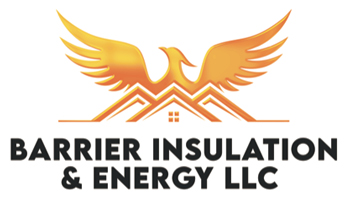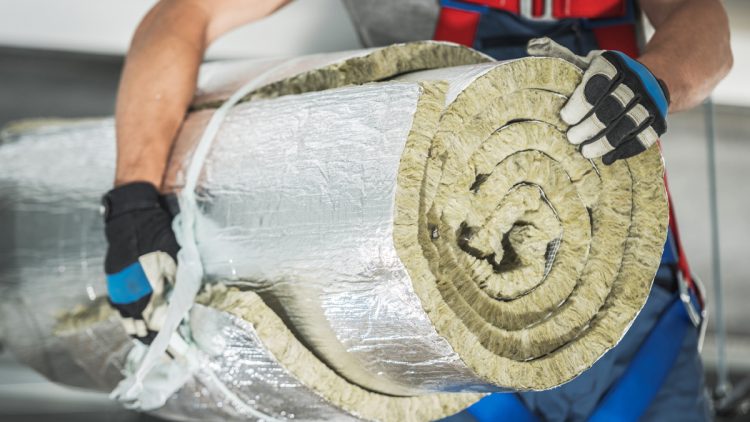Insulation Batts Vs Rolls
Choosing the best insulation type for your attic can be a tough task. Two of the most popular attic types are batt and roll insulation. Let’s see how these insulation types differ.
What Are The Differences Between Batt And Roll Insulation?
There are many different types of batt and rolled insulation for residential purposes. Roll insulation is, of course, available in rolls and batts come in pre-cut sections:
- Rolled insulations is available in lengths ranging from 20 to 40 feet and are made to fit in between studs and joists. This option is better suited to insulate areas such as flooring, attics and spaces with long spans.
- Batt insulation is best for fitting right into spaces. It is a popular option for floors, walls, attics, ceilings, trusses, and rafters within attics.
- Batt insulation can also be covered with aluminum or paper exterior layers that act as an air, dual or vapor barrier. There are also optional flame-retardant coverings for exposed insulation.
- Batt insulation can be used on any wall that has been unfinished. Floors, ceilings, and foundation can also benefit from batt insulation.
- Because of its low price, homeowners are capable of installing insulation themselves or they can hire contractors to install beams, joists, and studs during a home renovation or reconstruction.
Batt Insulation Guide
Batt insulation is commonly referred to as “batts” or “rolls”. This type utilizes a flexible blanket-like insulation that is best suited for easily accessible areas. Batts and rolls can be used in non-standard areas, so the material will have to be cut to size.
The blankets come in high, medium and standard-density constructions, made from fiberglass, rock wool and other similar materials. Batt insulation can be fitted quite easily to the specific areas, but it may be hard to fit in unusual or hard-to-access areas.
Pros & Cons Of Batt Insulation
Batt or blanket insulation is typically made of mineral wool or fiberglass. Most often, you will find batt insulation sold in rolls, with pre-cut sizes offered in some cases. Batt insulation is usually used in exposed walls, ceilings, attics or floors. Here is a look at some pros and cons associated with batt insulation.
Pros Of Batt Insulation:
- This material is fire-resistant.
- Can hold up against water damage.
- This is the easiest material for any DIY projects.
Cons Of Batt Insulation:
- Hard to fit in oddly-shaped areas.
- Material will compress over time.
- Requires the use of personal protective equipment.
How Much Does Batt Insulation Cost?
On average, batt and roll installation costs between $0.80-$2.60 per square foot. This equates to an average of $1,100-$3,900 for installation, according to HomeGuide. A roll of insulation typically costs $20-$90, which will cover anywhere between 40-75 square feet.
Roll Insulation Guide
This insulation is specifically designed for ease of manipulation and installation. Essentially, roll insulation can be cut and shaped to fit virtually any area. The standard material used for roll insulation is fiberglass, but this insulation can be made of natural fibers, mineral wool or plastic fibers. This type of insulation is best for areas where long and continuous pieces are necessary.
Pros & Cons Of Roll Insulation
Roll insulation comes with a few benefits and drawbacks.
Pros Of Roll Insulation:
- Easily cut to size.
- Best insulation type for large areas.
- Quick installation process.
Cons Of Roll Insulation:
- Thin material can be easy to tear.
- Fiberglass can cause itchy skin.
How Much Does Roll Insulation Cost?
There are a few factors to consider when deciding between batt and roll insulation. Material thickness and difficulty of the installation can certainly drive up the overall cost. Faced insulation, which comes with a foil cover that attaches to wooden studs or joists, can add to the project budget, as well.
A roll of insulation will cost anywhere from $20-$90, depending on brand, material and R-value. Typically, a roll of insulation covers 40-75 square feet. Roll insulation costs $0.80-$2.60 per square foot, according to HomeGuide.
Phoenix Valley Insulation Contractors
If you’re searching for insulation contractors in the Phoenix Valley, we can help! As one of the leading insulation installers we offer whichever type of insulation you prefer that fits your home and your budget best. For more information about how much it would cost to get your home insulated please give us a call to discuss the size of your home, which areas you’d like to insulate, and what type of insulation will work best.
Call Today for more information at 602-499-2922

